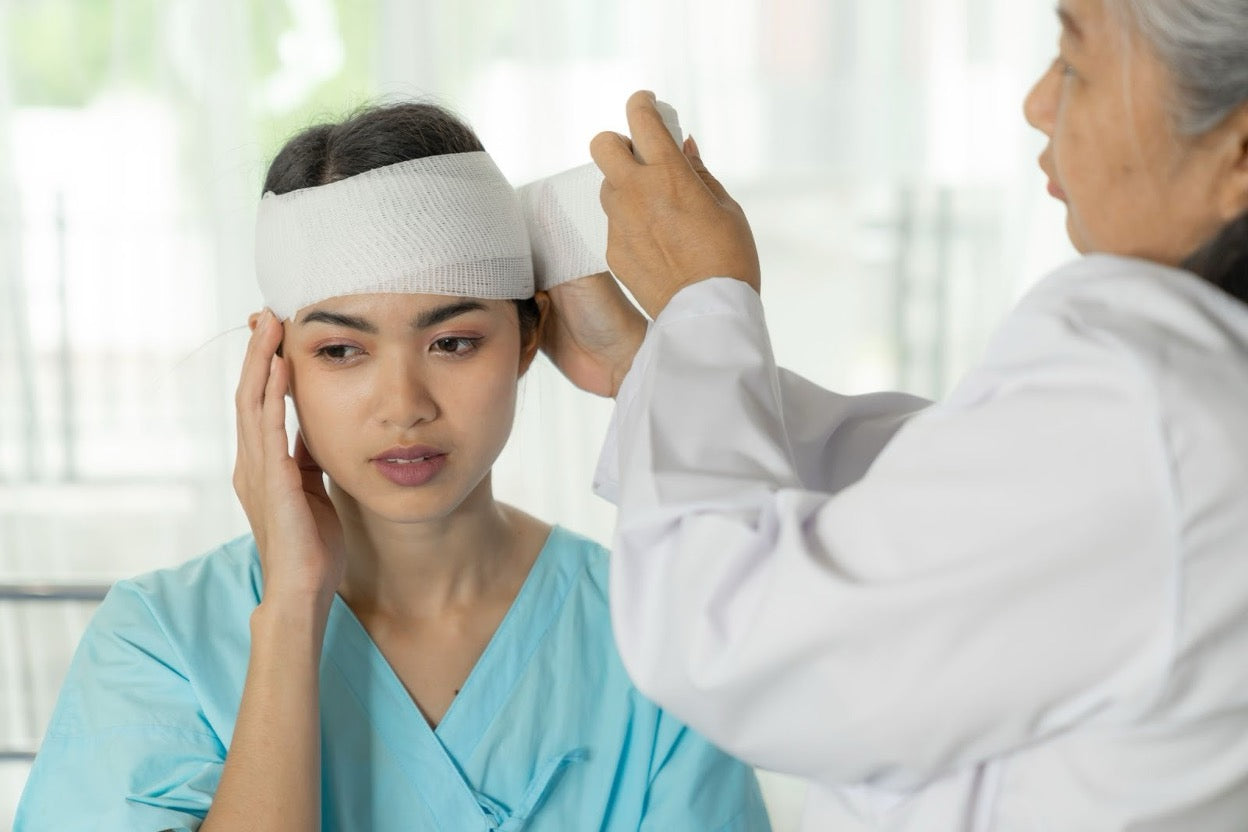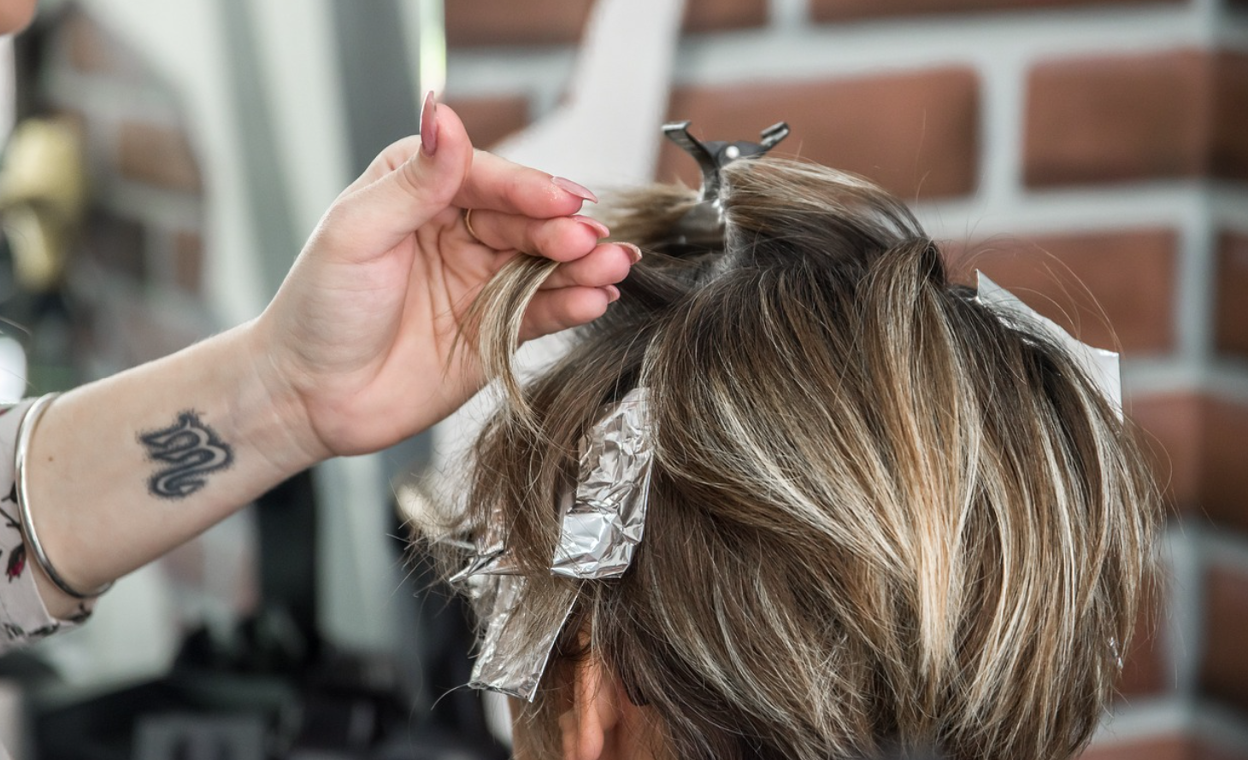Hair Loss After Craniotomy: Causes, Duration & Treatment
BY TRYBELLO
Nov 24, 2025

Key Takeaways
- Hair loss after craniotomy is common and can impact emotional well-being; knowing what to expect helps patients feel prepared and reassured.
- Hair shedding may result from surgery, post-operative stress, medications, or radiation, with the timing and extent varying by individual factors.
- Temporary hair loss occurs in shaved areas and due to telogen effluvium, while permanent loss is usually limited to the incision line; most hair regrows within months.
- Recovery timelines vary: initial regrowth usually takes 3–6 months, and substantial coverage after 12–18 months, but this varies from case to case.
- Trybello Hair Helper Spray can support regrowth by strengthening follicles and promoting thicker, fuller hair.
The Hair Loss Reality After Brain Surgery
Hair loss after craniotomy is a common concern that many patients face following brain surgery. While the primary focus is understandably on neurological recovery, the visible changes to appearance can significantly impact emotional well-being and self-confidence during the healing process. Understanding what to expect and knowing that solutions exist can provide reassurance during this challenging time.
“Doctor-Approved Natural Spray Rapidly Boosts Growth & Thickness.
Why 100,000+ Women Are Switching to Trybello!"
Join over 100,000 happy customers who've transformed their hair with our doctor-formulated spray in just 12 weeks, rated 4.8/5 by 40,000+ real users.
Proven Natural Ingredients
- • Caffeine Extract – Blocks DHT and boosts blood flow to follicles
- • Biotin – Direct scalp absorption, no pills needed
- • Castor Oil – Soothes inflammation and locks in moisture
- • Rice Water Extract – Strengthens hair and reduces shedding
120-Day Growth Guarantee: No results? 100% money back, no questions asked.
Why Hair Falls Out After Craniotomy
Hair loss after a craniotomy can result from several factors, including the surgery itself, post-operative stress, medications, and radiation therapy. The extent and timeline of hair loss depend on a combination of these causes.
Surgical Technique Impact
Traditional craniotomy often requires shaving part of the scalp to maintain a sterile field, causing temporary hair loss. Some surgeons now use partial shaving or “hair-sparing” techniques to minimize visible loss. Incision patterns, straight, curved, or zigzag, affect scar visibility and how well hair regrows around it.
A certain amount of hair loss along the scalp incision is inevitable after craniotomy surgery, and the scalp‑incision technique can affect hair follicle damage.
Post-Surgical Shock Hair Loss
Telogen effluvium, a temporary shedding triggered by physical stress, often appears 2–3 months after surgery. The body prioritizes healing, reducing resources for hair growth. Stress, reduced activity, and nutrient shifts can further disrupt the hair cycle.
A review of telogen effluvium describes how a triggering event such as surgery, can cause significant hair shedding 2–3 months later, with regrowth once the trigger resolves.

Hair loss after brain surgery is often temporary, except along the incision line.
Medication-Related Hair Thinning
Medications like anti-seizure drugs, steroids, and some painkillers can cause diffuse hair thinning. Hair usually regrows after discontinuing or adjusting the medication, but timelines vary. Working with your healthcare provider can help manage these effects while ensuring proper treatment.
Temporary vs. Permanent: What to Expect
Knowing whether hair loss after craniotomy is temporary or permanent helps set realistic recovery expectations. Most patients experience a mix of both, and understanding the difference can provide clarity during healing.
Areas Most Affected by Post-Craniotomy Hair Loss
Hair loss is usually most noticeable along the incision line, where a linear scar forms. A narrow border of permanent loss may develop around this scar due to reduced blood flow to follicles. Shaved areas typically regrow, while hair loss from stress generally resolves over time.
Typical Recovery Timeline for Hair Regrowth
In shaved areas, stubble often appears within 2–4 weeks, with more visible growth around 2–3 months. By six months, most patients see substantial coverage. Regrown hair may initially be coarser or slightly different in color, usually normalizing within a year. Shock hair loss (telogen effluvium) may take 4–6 months to improve.
Scar-Related Permanent Hair Loss
The incision line is most prone to permanent hair loss. Follicles disrupted by the scar may leave a hairless strip, whose width depends on technique and healing. Incisions following natural hair patterns are less noticeable, and modern closure methods aim to minimize visible scarring.
4 Effective Hair Restoration Options After Brain Surgery
Several effective strategies exist for managing hair loss after craniotomy, from natural regrowth to advanced medical interventions. The best approach depends on the hair loss, surgical site, and individual patient needs.
1. Natural Regrowth
Allowing natural regrowth is the simplest first step. Support hair health with proper nutrition, protein, iron, zinc, vitamins D and B complex, gentle care, and patience. Scalp massage may stimulate follicles, and strategic hairstyling can conceal thinning areas and scars during recovery.
2. Hair Transplantation for Surgical Scars
Hair transplants can permanently restore hair along craniotomy scars by moving follicles from donor sites. Scar tissue challenges graft survival, often requiring multiple sessions. Surgeons usually recommend waiting 12–18 months post-surgery for optimal results, but this may vary. Consulting a specialist experienced in scar transplantation can help you achieve the best outcomes.
3. Topical Treatments
Topical treatments can support hair regrowth after craniotomy without relying on medications. Look for products containing natural, evidence-backed ingredients like Anagain. These ingredients nourish hair follicles, improve scalp circulation, and strengthen existing strands. Regular scalp application helps create a healthier environment for regrowth, reduces shedding, and can promote thicker, fuller hair over time.
4. Cosmetic Solutions During Recovery
While waiting for regrowth, cosmetic options improve appearance and confidence. Hair fibers, scalp micropigmentation, wigs, and hair systems provide immediate coverage. Accessories like scarves or hats can also effectively conceal smaller areas of loss during recovery
When to Start Treatment After Craniotomy
Timing is essential for hair loss treatments after craniotomy. The brain and scalp need time to heal before any interventions that could affect recovery or delicate tissues. Most neurosurgeons advise prioritizing neurological healing before cosmetic measures.
Initial Healing Period
The first 4–6 weeks after surgery require gentle care of the incision, avoiding stress or trauma. Even gentle topical treatments are usually postponed until the surgeon confirms full healing. More invasive procedures, like hair transplantation, typically wait 12–18 months to allow scar tissue to stabilize, improving long-term results. Focusing on overall health during this period naturally supports hair regrowth later.
Medical Clearance
Before starting any hair restoration, obtain explicit clearance from your neurosurgeon. This ensures the surgical site is stable and the brain has healed. Patients undergoing radiation or chemotherapy may need additional coordination with oncology teams, postponing hair treatments until primary therapies are complete. A multidisciplinary approach ensures cosmetic efforts do not compromise recovery.
Hair Care Tips During Recovery

Topical treatments with natural ingredients, like biotin and caffeine, can support follicle health.
Proper hair and scalp care during recovery can improve comfort and support long-term regrowth. Gentle techniques protect existing hair while creating optimal conditions for new growth in affected areas.
Gentle Washing Techniques
Follow your neurosurgeon’s instructions for incision care before normal washing. Once cleared (usually 1–2 weeks post-surgery), use lukewarm water, gentle sulfate-free shampoo, and fingertips rather than nails. Diluting shampoo can reduce irritation, and patting hair dry or using a wide-tooth comb minimizes stress on fragile growth.
Products to Avoid Near Incisions
Avoid hair products containing alcohol, fragrances, sulfates, or harsh preservatives near healing sites. Chemical dyes, straighteners, and perms should be postponed 3–4 months. Styling products should be reintroduced sparingly, and patch testing away from the incision helps identify potential irritants.
Nutrition for Hair Regrowth
Protein, iron, B vitamins (especially biotin), zinc, and vitamin D support follicle health. Include lean meats, legumes, spinach, and fortified cereals. Adequate hydration and neurosurgeon-approved supplements can further aid hair regrowth while supporting overall recovery.
Support Your Hair Regrowth with Trybello Hair Helper Spray
Recovering from craniotomy can affect hair growth, making it essential to support follicles and scalp health during healing. Trybello Hair Helper Spray is a lightweight, leave-in treatment designed to reduce shedding and stimulate visible hair regrowth naturally.
Its unique formula combines:
- Biotin – strengthens hair follicles, promotes keratin production, and improves hair thickness and resilience.
- Castor Oil – moisturizes the scalp, reduces dryness, and detoxifies with antioxidant-rich ricinoleic acid.
- Caffeine – extends the hair’s growth phase (anagen), encouraging longer and faster-growing strands.

Trybello Hair Helper Spray can help reduce shedding and strengthen regrowing hair naturally.
- Reduced shedding within 4–6 weeks
- Healthier, shinier hair by week 6–8
- Baby hairs starting to grow around thinning areas by week 12–16
- Thicker, fuller strands with continued use
Why it works for post-craniotomy hair care:
- Non-greasy, fast-absorbing, and safe for daily use
- Free from sulfates, parabens, and artificial fragrances
- Suitable for sensitive or recovering scalps
- Supports hair thinning caused by surgery, stress, hormonal changes, or other challenges
- Part your hair and focus on thinning areas.
- Spray directly onto the scalp and massage for 1–2 minutes.
- Leave in or rinse after 30 minutes and style as usual.
With consistent application, Trybello Hair Helper Spray creates a healthier scalp environment, promotes new growth, and strengthens existing hair over time. Plus, it comes with a 120-day risk-free guarantee, so you only pay if you see noticeable results.
Frequently Asked Questions (FAQs)
Trending Topics
See our latests posts #TRYBELLO












